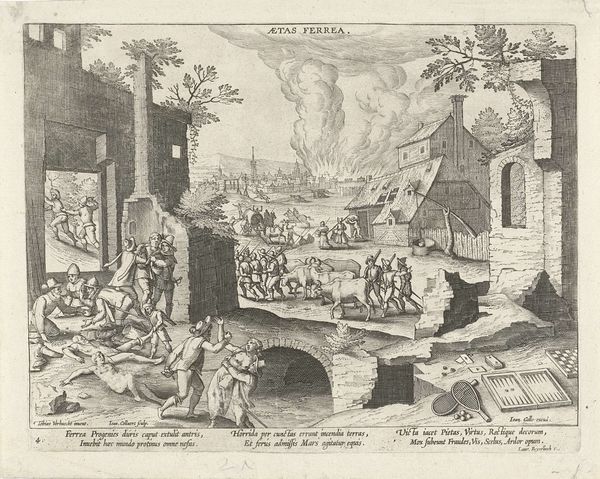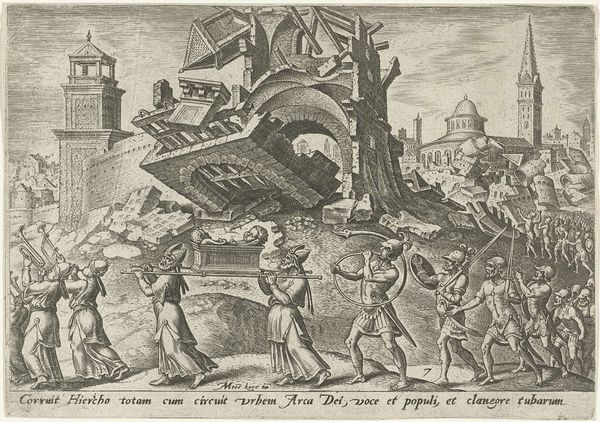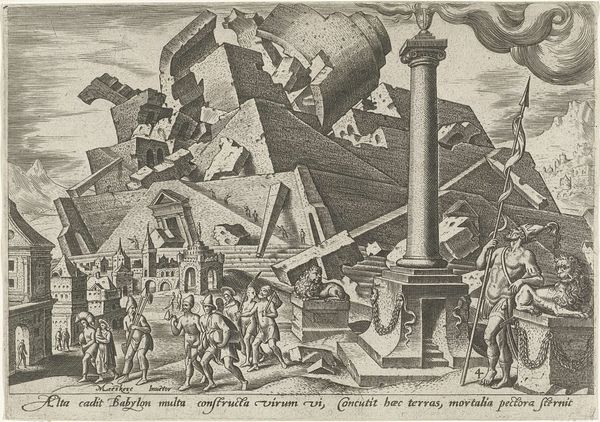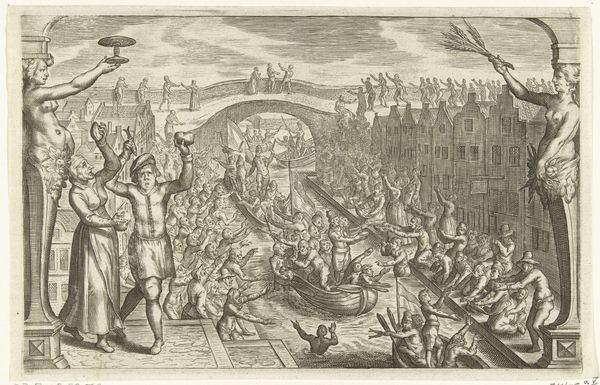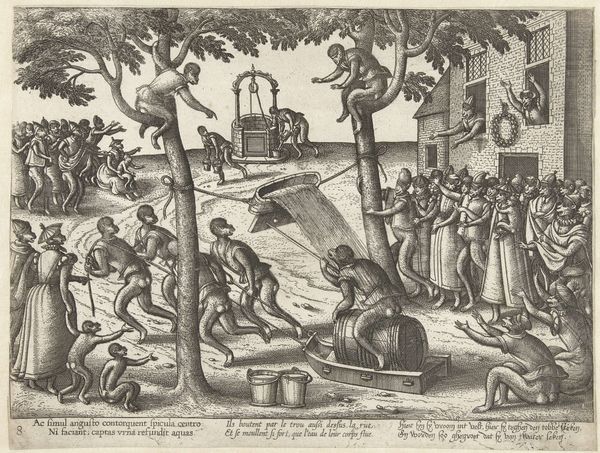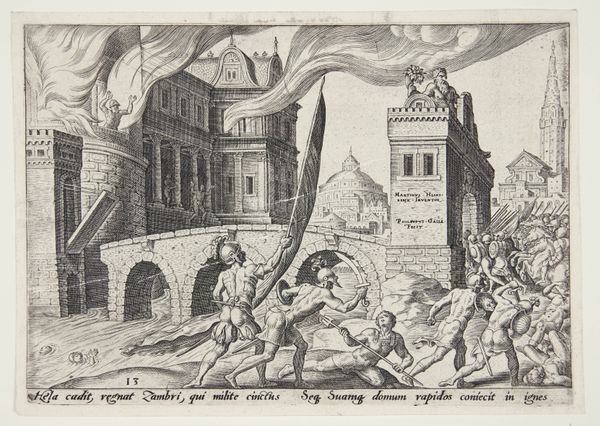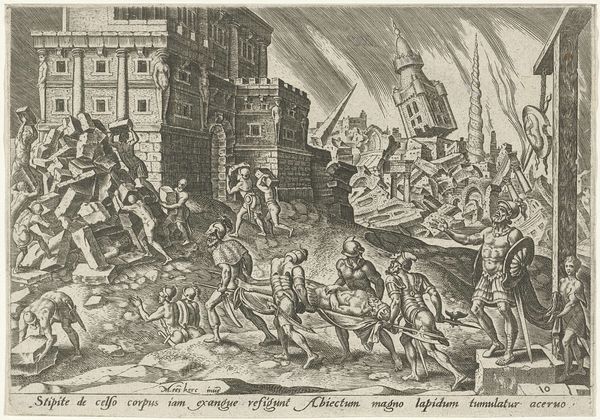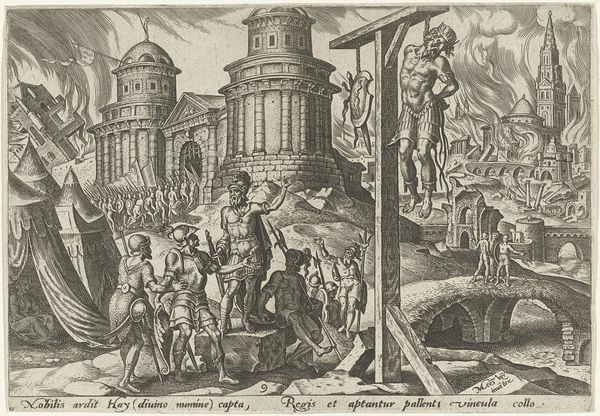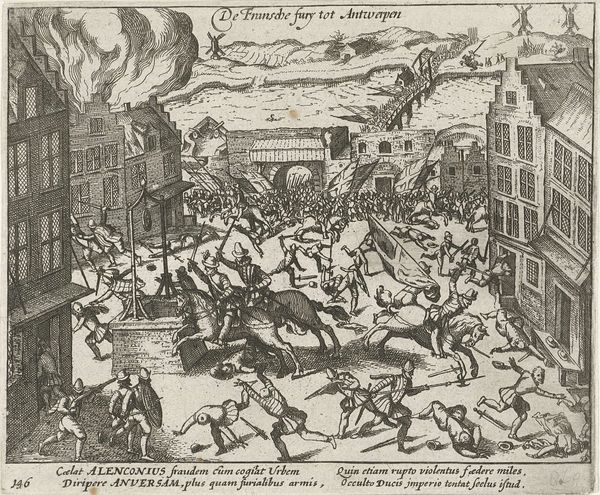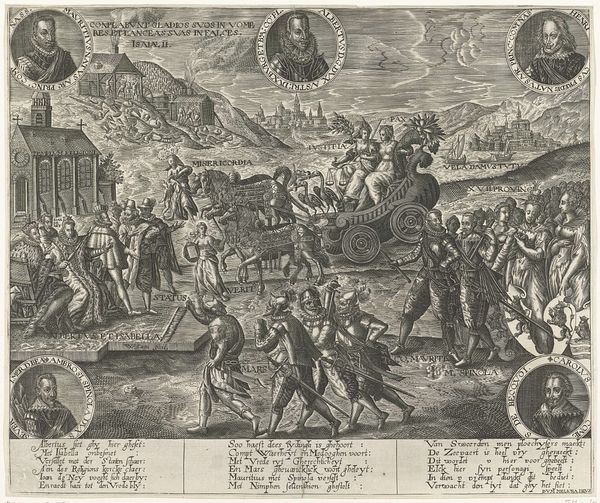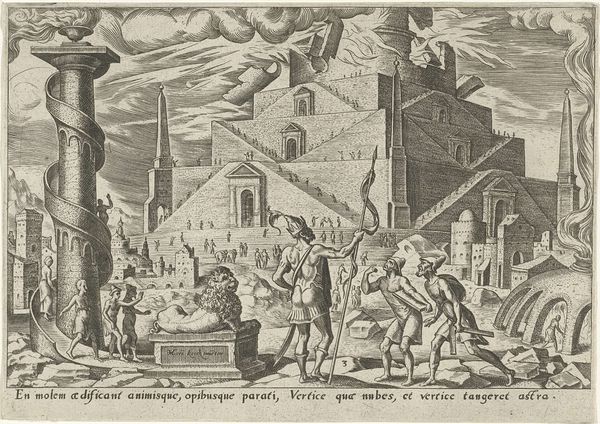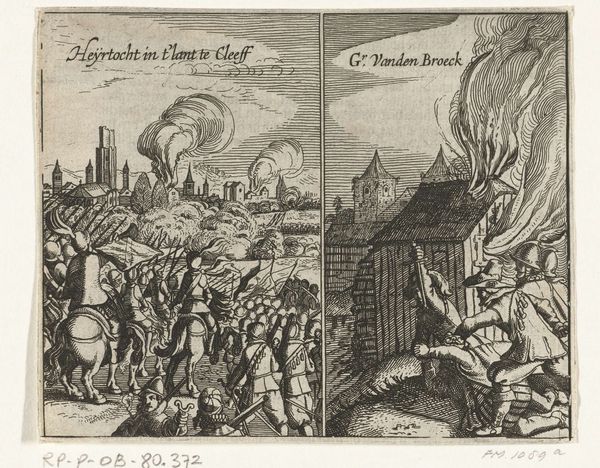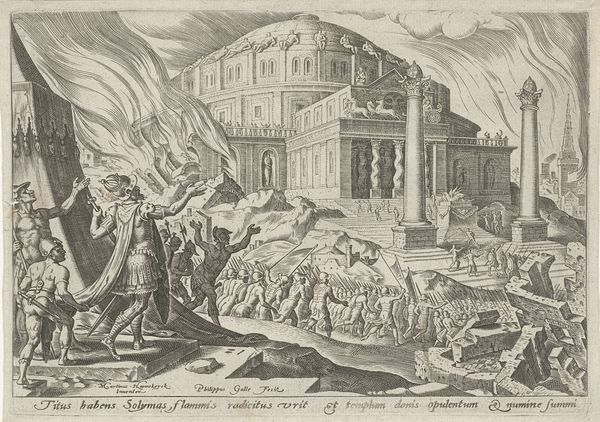
print, engraving
# print
#
mannerism
#
figuration
#
line
#
history-painting
#
engraving
Dimensions: height 140 mm, width 201 mm
Copyright: Rijks Museum: Open Domain
Editor: So, this is Philips Galle's "The Destruction of Ai and the Stoning of Achan," an engraving from 1569 at the Rijksmuseum. The sheer density of line work is incredible. What immediately strikes me is the chaos rendered with such precise detail. How do you interpret this work, considering its composition? Curator: From a formalist perspective, the work is a fascinating exercise in controlled chaos. The artist's deployment of line, particularly in the background flames and crumbling architecture, creates a dynamic sense of movement, contrasting sharply with the more rigidly defined figures in the foreground. Editor: I see what you mean. There's almost a push and pull between order and disorder, especially between the architectural lines and the human figures stoning Achan. Curator: Precisely. The contrasting textures—the smoothness of the figures against the rough hatching suggesting fire and destruction—add to the visual tension. And notice how the central figure, possibly representing Joshua, acts as a visual anchor amidst the surrounding turmoil. Does that anchored chaos serve the viewer's eye? Editor: Yes, the more I look, the more the figure’s gesture, and the gaze it solicits to meet with the chaos happening with the rest of the population… Curator: Also, examine the composition's perspective, it isn't exactly unified, almost flattened…it’s as if the artist wants to contain multiple viewpoints simultaneously. Editor: That makes sense! I'm beginning to appreciate how the visual discord contributes to the scene’s drama. It’s less about realistic depiction and more about conveying the event’s emotional and moral weight through formal means. Thank you. Curator: Indeed. It showcases how form can embody and amplify content. Thank you, too.
Comments
No comments
Be the first to comment and join the conversation on the ultimate creative platform.
